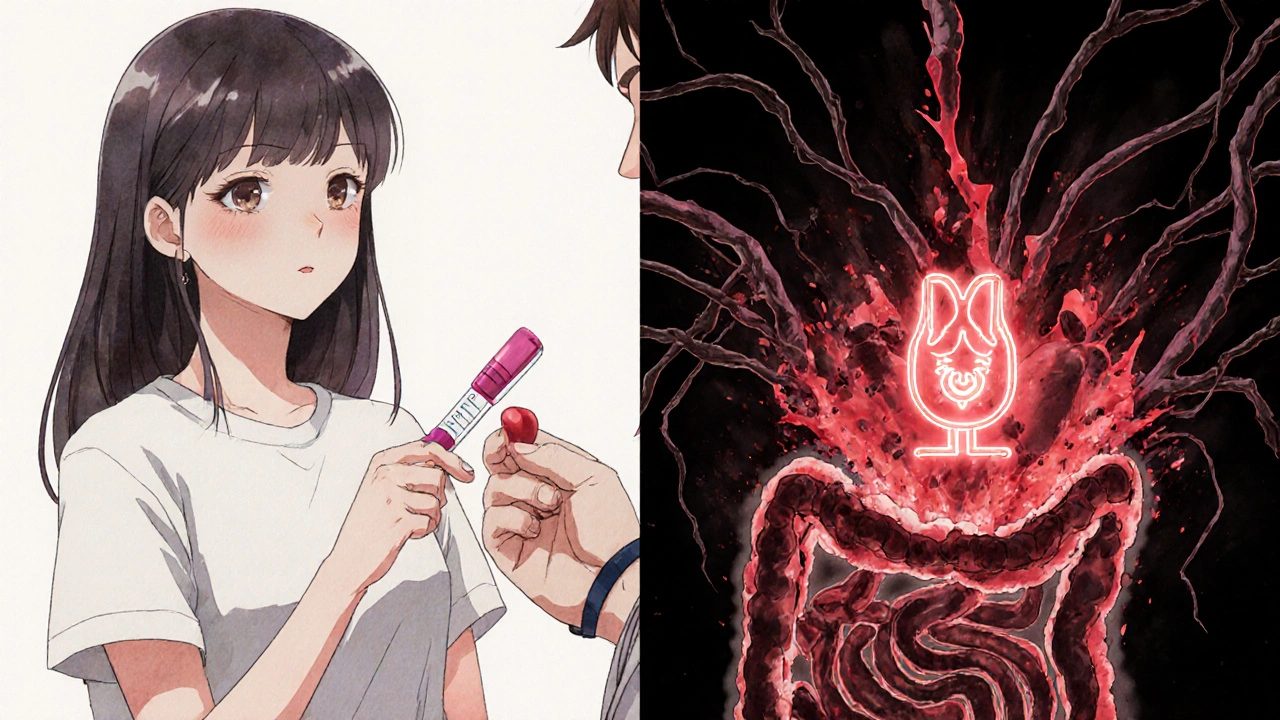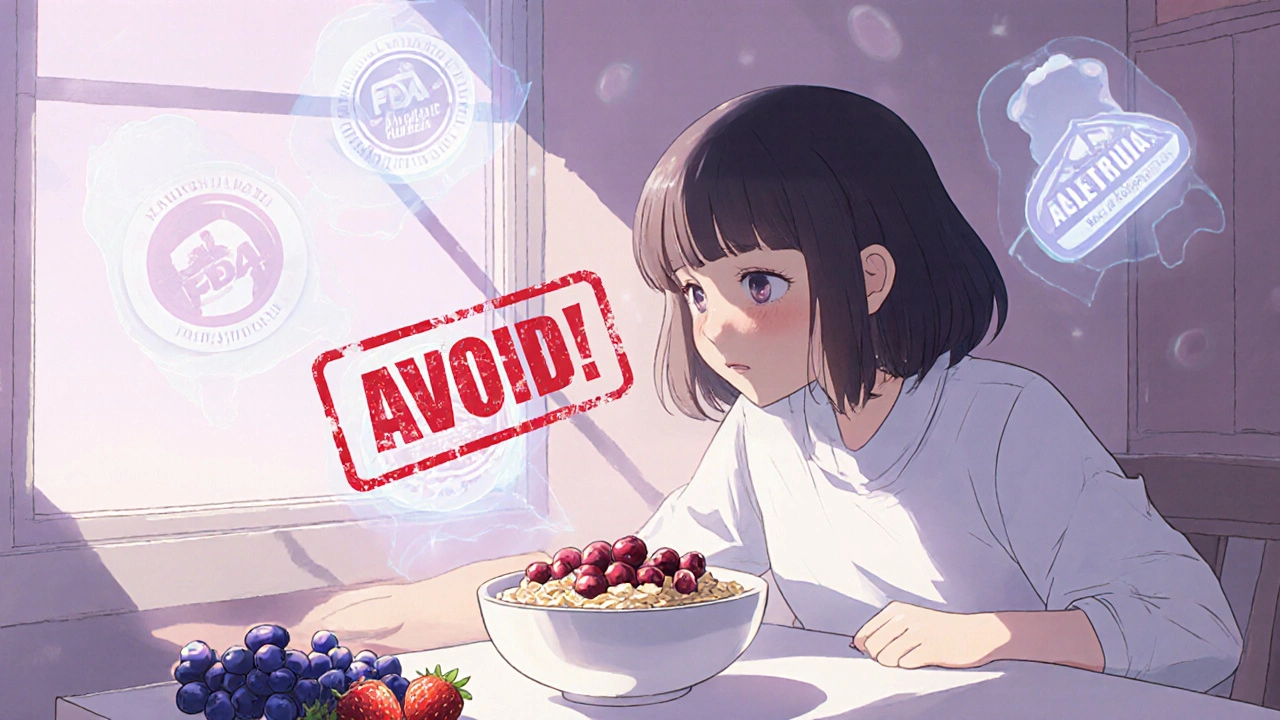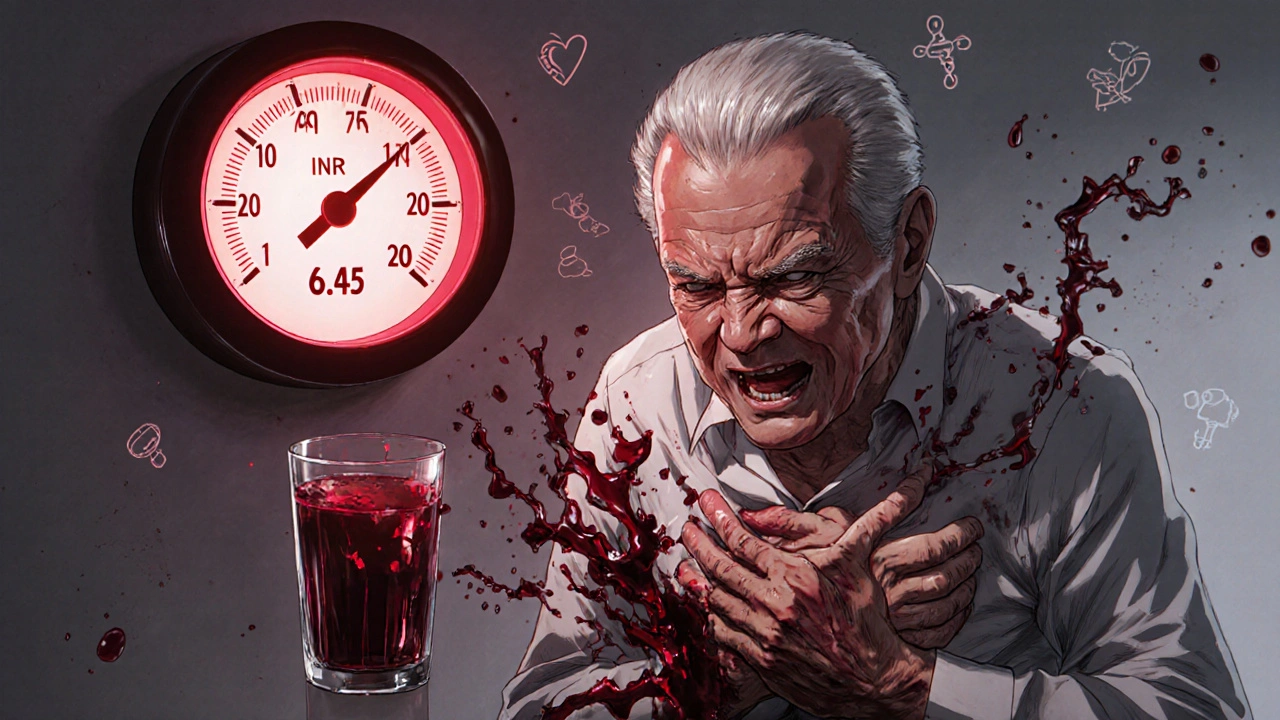If you're taking warfarin, a simple glass of cranberry juice could be more dangerous than you think. It's not just a healthy drink for your urinary tract - it can throw your blood-thinning medication out of balance, leading to serious bleeding. This isn't a myth or a rumor. It's a documented, life-threatening interaction backed by case reports, regulatory warnings, and clinical guidelines.
Why Cranberry Juice Can Be Risky with Warfarin
Warfarin works by slowing down your blood's ability to clot. That’s why it’s used for conditions like atrial fibrillation, deep vein thrombosis, and after heart valve replacements. But it has to be just right. Too little, and you risk a stroke or clot. Too much, and you could bleed internally - even from a minor bump or nosebleed. The problem with cranberry products is that they can make warfarin stronger. Studies show that compounds in cranberries, especially flavonoids like quercetin, block the liver enzyme CYP2C9. This enzyme is responsible for breaking down the active part of warfarin. When it’s blocked, warfarin builds up in your system. Your INR - the test that measures how long it takes your blood to clot - can spike dangerously high. One well-documented case involved a 78-year-old man taking 45 mg of warfarin per week. After drinking half a gallon of cranberry-apple juice every week, his INR jumped from a stable 2.8 to 6.45. That’s more than double the upper limit of the safe range. He was lucky he didn’t have a major bleed. Others haven’t been.What Counts as a Cranberry Product?
It’s not just cranberry juice. Anything made from cranberries can cause this interaction:- Cranberry juice (even diluted or mixed with apple juice)
- Cranberry capsules or tablets (often sold for urinary health)
- Cranberry extract supplements
- Cranberry-flavored sodas, teas, or snacks
- Cranberry sauce or dried cranberries (less risk, but still possible)
How Fast Does This Interaction Happen?
You might think you’d need to drink gallons every day to cause trouble. But that’s not true. In some cases, INR levels started rising within just 3 days of starting cranberry juice. One woman took a daily glass of cranberry cocktail for two weeks and saw her INR climb from 2.5 to 8.3 - enough to cause gastrointestinal bleeding. Another patient saw her INR jump from 2.4 to 4.1 in just one week after starting daily cranberry juice for UTI prevention. The timing varies. Some people see changes in 2 days. Others take up to two weeks. But once you stop the cranberry product, your INR usually drops back to normal within 5 to 7 days - as long as you don’t change your warfarin dose.
Not Everyone Has the Same Risk
Here’s where it gets tricky. Not every person on warfarin who drinks cranberry juice has a problem. Some Reddit users report taking cranberry pills for years with no INR changes. One person said their doctor checks their INR every two weeks, so they’ve never had an issue. But here’s the catch: you don’t know if you’re one of the people who will react. The risk depends on your genetics. Some people have a variation in the CYP2C9 gene that makes them extra sensitive. If you have the *CYP2C9*2 or *CYP2C9*3 variant, cranberry can make your INR rise 2 to 3 times more than in someone without it. Also, the amount and type of cranberry matter. A 150 mL glass of concentrated juice has more active compounds than a tablespoon of dried cranberries. Sweetened juice cocktails often contain higher levels of flavonoids than pure juice. And taking cranberry supplements daily is riskier than occasional use.What Should You Do?
The safest answer? Avoid cranberry products completely. The American College of Chest Physicians and the American Heart Association both recommend this. Even occasional use can cause unpredictable spikes. Dr. Sarah Jones, a cardiologist at Massachusetts General Hospital, says: "Complete avoidance is the safest approach." If you’ve been using cranberry products for UTI prevention, talk to your doctor about alternatives. Methenamine hippurate or low-dose antibiotics are proven options that don’t interfere with warfarin. If you absolutely refuse to give up cranberry juice, then:- Stick to the same amount every day - no bingeing, no skipping
- Tell your doctor immediately if you start or stop drinking it
- Get your INR checked within 3 to 5 days of starting cranberry
- Switch to weekly INR tests while you’re using it
- Stop immediately if your INR goes above 3.5
What About New Blood Thinners?
You might be thinking: "I’ve heard newer drugs like apixaban or rivaroxaban don’t interact with cranberry. Should I switch?" That’s true - direct oral anticoagulants (DOACs) don’t rely on CYP2C9 metabolism. Studies show they don’t have the same interaction with cranberry. But switching isn’t automatic. DOACs cost more. They’re not always covered by insurance. And they’re not safe for everyone - like people with mechanical heart valves or severe kidney disease. About 2.5 million Americans still take warfarin in 2025. That’s a lot of people who need to be aware of this risk. Even though warfarin prescriptions are dropping by 18% each year, it’s still the go-to for many.
Real Stories, Real Consequences
In New Zealand, the Centre for Adverse Reactions Monitoring received 33 reports of warfarin interacting with food or supplements between January and September 2022. Cranberry was a major contributor. One patient had a brain bleed after drinking cranberry juice daily. Another had to be hospitalized for internal bleeding after starting cranberry capsules. These aren’t rare. They’re preventable. The FDA has logged 17 cranberry-warfarin interaction reports between 2020 and 2022. That’s just what got reported. Many more go unreported.What to Tell Your Doctor
When you see your doctor or anticoagulation clinic, always say:- "I drink cranberry juice" - even if it’s just once a week
- "I take cranberry pills for my bladder"
- "I started eating dried cranberries in my oatmeal"


Author
Mike Clayton
As a pharmaceutical expert, I am passionate about researching and developing new medications to improve people's lives. With my extensive knowledge in the field, I enjoy writing articles and sharing insights on various diseases and their treatments. My goal is to educate the public on the importance of understanding the medications they take and how they can contribute to their overall well-being. I am constantly striving to stay up-to-date with the latest advancements in pharmaceuticals and share that knowledge with others. Through my writing, I hope to bridge the gap between science and the general public, making complex topics more accessible and easy to understand.